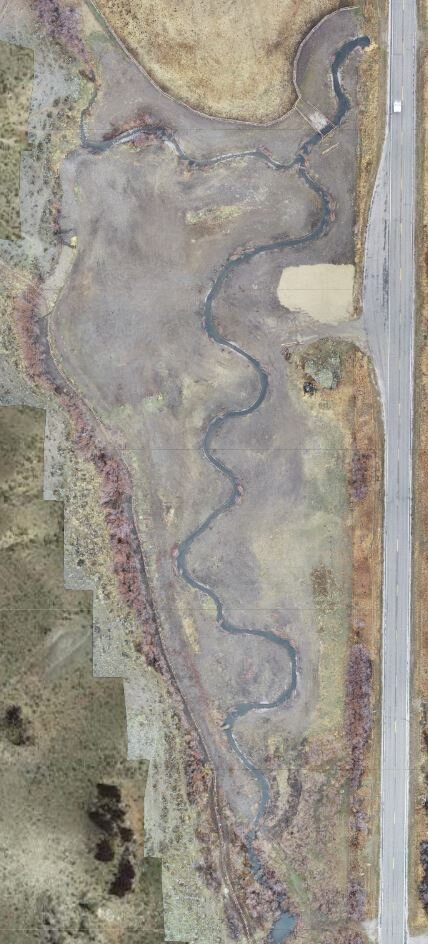Little Sawmill Creek - Salmon Habitat Restoration
Project Highlights
· Approximately 475 ft of Little Sawmill Creek and 1,100 ft of Indian Springs restored to provide habitat for Chinook salmon and bull trout
· Approximately 2 acres of wetlands and riparian habitat created within the footprint of a historic calving operation
· Project partners included TU, IDFG and the Idaho Office of Species Conservation
Design Approach: Channel pattern, dimensions and profile were based on analysis of surveyed reference reach conditions. Two acres of floodplain and riparian functions were restored adjacent to both channels. Racked woody debris structures, willow transplants and constructed riffles were used to maintain complex aquatic habitat for endangered fish species. Channels were sized to maximize instream habitat at low flows and utilize high flows to maintain stream functions and habitat.
Services Provided: Topo and Bathymetric Survey; Wetland Delineation; Groundwater Well Installation, Monitoring & Analysis; Hydrologic, Geomorphic, Hydraulic & Ecologic Analyses, Civil 3D CAD designs, Basis of Design Report; Permitting Assistance; Construction Management; As-built Survey
Flow Range: 3 – 23 cfs
Before: the straightened stream is overflowing its banks and not providing habitat
Immediately after construction: the stream is re-meandered and large woody debris provides cover and shade
Before: a weedy field, the stream has been ditched along the base of the hill
Immediately after construction: the stream has been returned to its historic floodplain. Natural materials such as riffle gravels, small and large woody debris, and native vegetation were installed to provide complex aquatic habitat necessary to over-winter juvenile Chinook salmon.
1 year after construction: Riparian and aquatic vegetation has established and is providing channel stability, stream shading, and beneficial habitat
Pre-construction aerial image
Post-construction aerial image
2 years post-construction aerial image showing revegetation success and floodplain inundation








